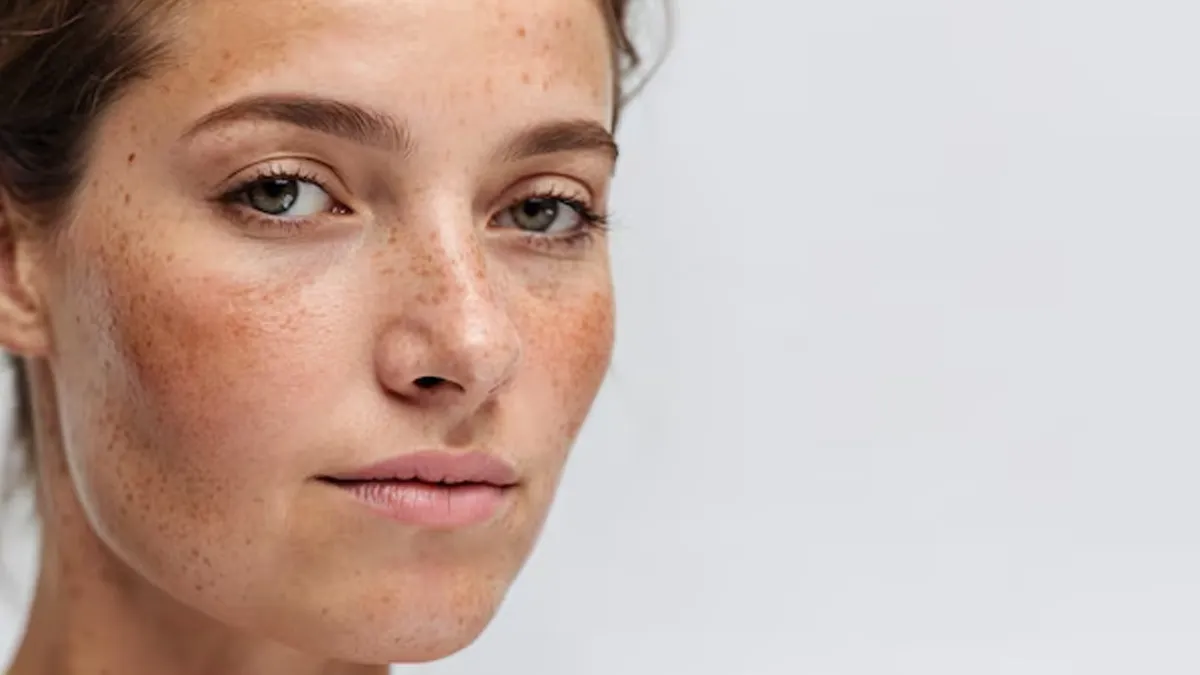
Freckles are small, light brown spots that typically appear on the skin as a result of sun exposure. Today, they’re often seen as beauty marks, with many beauty influencers and makeup artists even drawing them on to create a youthful look. However, it's important to understand why some people naturally develop freckles while others don’t and when these spots might signal underlying skin health issues.
Table of Content:-
Also Read: Freckles Prevention Tips: Here’s How You Can Prevent These Beauty Spots
What Are Freckles And Why Do They Develop?

Speaking with the OnlyMyHealth team, Dr Debeshi, Medical Head & Founder of "Lueur Aesthetics", describes freckles as small, flat brown spots commonly found on sun-exposed areas like the face and shoulders. They are caused by an increase in melanin production, often triggered by UV radiation.
According to the doctor, genetics also play a key role in the development of freckles, with people with fair skin or red hair (carrying the MC1R gene) being more prone to them due to lower melanin protection.
Are Freckles Concerning?

While freckles themselves are benign and not a form of skin cancer, it is important to understand that their presence can indicate a history of frequent sun exposure, which raises the risk of long-term ultraviolet (UV) damage.
In some cases, individuals with a lot of freckles may have more sun-sensitive skin, making them more vulnerable to actinic damage or even melanoma.
A 2012 study revisited a 1997 Washington State study that developed a risk score for melanoma. Freckle density, which refers to the number and concentration of freckles on a person's skin, was a key factor, along with age, hair colour, and sunburn history. A higher freckle density indicates greater sun sensitivity and an increased risk of skin damage.
Dr Debeshi recommends monitoring changes in pigmentation, especially if new spots appear suddenly or existing ones change in shape, size, or colour.
Also Read: Can Having More Moles Increase Your Skin Cancer Risk?
Harmless Freckles Or Serious Lesions Or Moles?

Dr Debeshi suggests that freckles are uniform in colour, flat, and typically small. They usually appear in clusters and darken with sun exposure. In contrast, moles or lesions can be raised, have irregular borders, vary in colour, or grow over time. A helpful tool to distinguish between the two is by applying the ABCDE rule:
- A: Asymmetry
- B: Border irregularity
- C: Colour variation
- D: Diameter greater than 6mm
- E: Evolving over time
If a spot doesn’t fit the pattern of a typical freckle, it should be evaluated by a dermatologist, the doctor recommends.
A Final Word
Dr Debeshi advises, “Individuals with freckled skin usually have fair, UV-sensitive skin, which is more prone to sunburn, pigmentation changes, and skin cancers. However, skin cancer isn't so common in India.”
“Daily broad-spectrum sunscreen, protective clothing, and regular skin checks—both self-exams and annual dermatologist visits—are highly recommended. Prevention and early detection are key when it comes to maintaining healthy skin,” she concludes.
Also watch this video
How we keep this article up to date:
We work with experts and keep a close eye on the latest in health and wellness. Whenever there is a new research or helpful information, we update our articles with accurate and useful advice.
Current Version
